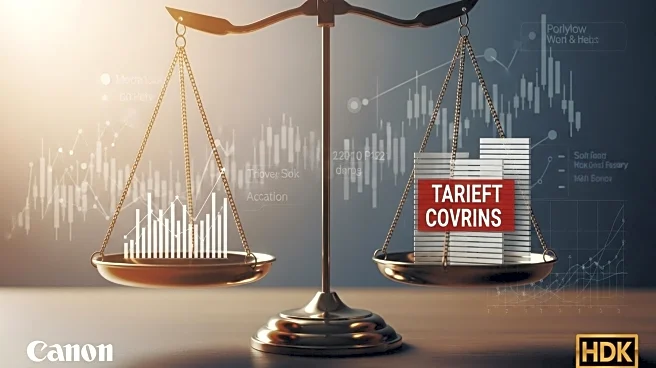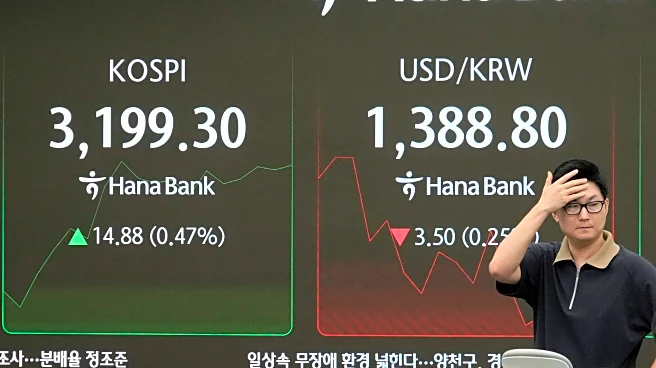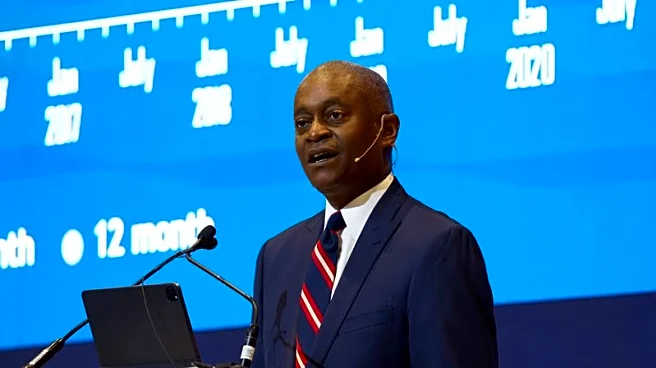What's Happening?
The Federal Reserve is expected to reduce the Fed Funds Rate by 0.25% during its upcoming meeting on September 16-17, 2025. This decision comes amid ongoing concerns about inflationary and recessionary conditions in the United States. The gold market has reacted to these expectations, with prices reaching record highs recently. The anticipation of reduced interest rates, coupled with heightened domestic and global political concerns, has contributed to the surge in gold prices. Market participants are also closely monitoring the U.S. employment data set to be released, which could significantly impact equity markets.
Why It's Important?
The anticipated reduction in interest rates by the Federal Reserve is a critical development for the U.S. economy, as it may influence borrowing costs, consumer spending, and investment decisions. Lower interest rates typically encourage economic activity by making loans cheaper, potentially stimulating growth. However, they can also lead to inflationary pressures if not managed carefully. The gold market's response to these expectations highlights the precious metal's role as a hedge against economic uncertainty. Investors may benefit from the rising gold prices, while those relying on fixed-income investments could face challenges due to lower yields.
What's Next?
Following the September meeting, the Federal Reserve has scheduled additional meetings on October 28-29 and December 9-10, where further rate adjustments may be considered. Market participants will continue to assess the impact of U.S. tariffs on economic activity, as the Trump administration's tariff policies remain fluid. The release of U.S. employment data will be a key indicator for future economic trends, potentially influencing the Fed's decisions. Investors are advised to maintain a long position in gold, with hedging strategies to mitigate potential sell-offs in prices.
Beyond the Headlines
The broader implications of the Federal Reserve's actions extend to global markets, as changes in U.S. interest rates can affect international trade and investment flows. The ongoing political tensions, including the use of U.S. military for urgent domestic and international policy issues, add layers of complexity to the economic landscape. The interplay between monetary policy and geopolitical factors underscores the need for strategic investment approaches in volatile times.













